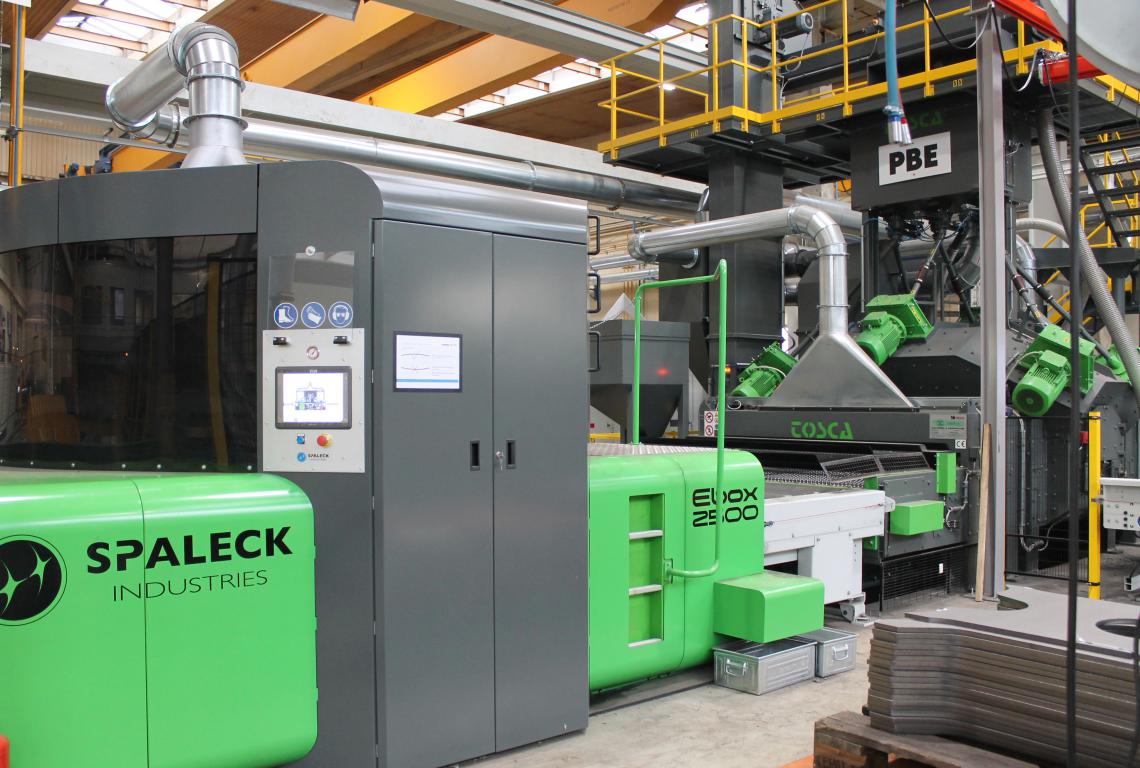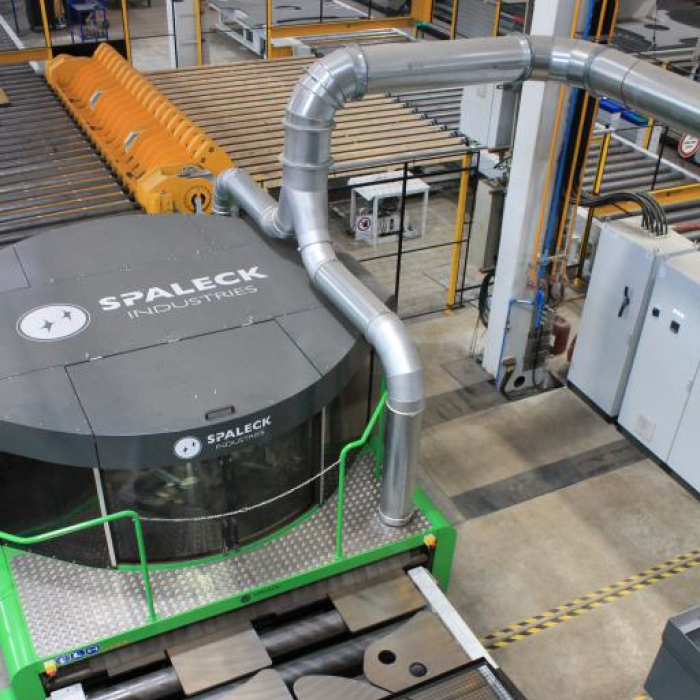SEMI-AUTOMATED FINISHING LINE
The new line is part of a semi-automated global concept, from the material yard to the intermediate warehouse of primary parts for the metal fabrication shops.
Stored in an outdoor material yard, the plates are transported to a first shotblasting machine for the initial deoxidation and cleaning step. The treated plates then supply the various plasma and torch cutting benches. These benches are aligned on the same rails, providing the necessary availability and flexibility for the manufacturer's production process.
Seized by a magnetic lifting device, the entire cut array is loaded onto the finishing line, thus freeing up the cutting bench in a single handling operation. The interest: To be able to optimise the cutting cycles by using tables for their primary function, i.e. to cut and increase the Synthetic Efficiency Rate (SER) of this equipment.
After being separated from the stock skeleton, the array of parts advances on a conveyor line. The small parts to be sent to the deburring tumbler are discharged by a side conveyor. The large parts continue to the transfer conveyor. Several inlets, for torch cut, chamfered or large parts, prevent counter-flow.
The array is then turned over using a magnetic turner. This element is a unique, high-tech development that allows a complete array of parts to be handled and flipped over onto the deburring machine conveyor, thus presenting the side to be deburred upwards. On the other hand, this flipping also makes it possible to change the hall, thus passing the complete array from the cutting/machining hall to the finishing hall in one single operation.
The array, measuring 2.5 m wide, then begins the finishing steps, namely passing through the EBOX deburring machine, then a final shotblasting step to descale and clean up all the internal and external edges of the parts, guaranteeing better welding quality and improved paint adhesion. The array is then available for the rest of the process.
Upon completion of the last process and after transfer, a camera is used to identify each reference and to distribute each part to a predefined kit for the subsequent phases (welding, painting, assembly).





